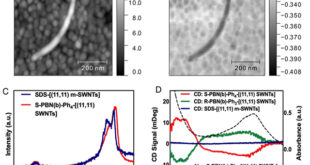Journal Reference
Chemistry. 2015 Aug 3;21(32):11417-26.
Vidal-Ferran A1,2, Mon I3, Bauzá A4, Frontera A4, Rovira L3.
[expand title=”Show Affiliations”]- Institute of Chemical Research of Catalonia (ICIQ), Avgda. Països Catalans 16, 43007 Tarragona (Spain), Fax: (+34) 977920228. [email protected].
- Catalan Institution for Research and Advanced Studies (ICREA), Passeig Lluís Companys 23, 08010 Barcelona (Spain). [email protected].
- Institute of Chemical Research of Catalonia (ICIQ), Avgda. Països Catalans 16, 43007 Tarragona (Spain), Fax: (+34) 977920228.
- Departament de Química, Universitat de les Illes Balears (UIB), Cra. de Valldemossa, km 7.5. Palma, 07122 Palma de Mallorca (Spain).
Abstract
Herein we report the use of polyether binders as regulation agents (RAs) to enhance the enantioselectivity of rhodium-catalyzed transformations. For reactions of diverse substrates mediated by rhodium complexes of the α,ω-bisphosphite-polyether ligands 1-5,a-d, the enantiomeric excess (ee) of hydroformylations was increased by up to 82 % (substrate: vinyl benzoate, 96 % ee), and the ee value of hydrogenations was increased by up to 5 % (substrate: N-(1-(naphthalene-1-yl)vinyl)acetamide, 78 % ee). The ligand design enabled the regulation of enantioselectivity by generation of an array of catalysts that simultaneously preserve the advantages of a privileged structure in asymmetric catalysis and offer geometrically close catalytic sites. The highest enantioselectivities in the hydroformylation of vinyl acetate with ligand 4 b were achieved by using the Rb[B(3,5-(CF3)2 C6 H3)4] (RbBArF) as the RA. The enantioselective hydrogenation of the substrates 10 required the rhodium catalysts derived from bisphosphites 3 a or 4 a, either alone or in combination with different RAs (sodium, cesium, or (R,R)-bis(1-phenylethyl)ammonium salts). This design approach was supported by results from computational studies.
© 2015 WILEY-VCH Verlag GmbH & Co. KGaA, Weinheim.
Go To Chemistry.
 Advances in Engineering Advances in Engineering features breaking research judged by Advances in Engineering advisory team to be of key importance in the Engineering field. Papers are selected from over 10,000 published each week from most peer reviewed journals.
Advances in Engineering Advances in Engineering features breaking research judged by Advances in Engineering advisory team to be of key importance in the Engineering field. Papers are selected from over 10,000 published each week from most peer reviewed journals.


